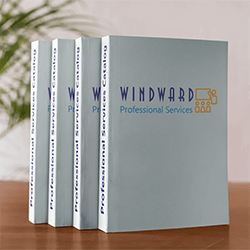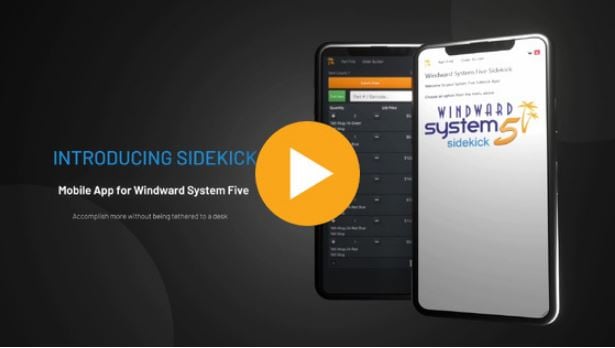Year-End Procedure
Year-End Procedure
Contrary to popular belief, "year-ends" do not occur on the last day of your financial year. You must first wait for your bank statements and final supplier bills to arrive. After posting all known transactions, you send the information to your accountant and await adjustments for depreciation, tax planning, and other necessary entries. By the time your year-end is complete, it could take several months.
System Five enables you to post into the previous financial year and reprint all accounting reports for prior periods. For example, on June 15, you can reprint the Balance Sheet, Income and Expense Statement, Aged Accounts Receivable (A/R), and Aged Accounts Payable (A/P) reports for December 31 of the previous year. While some accounting systems allow you to reprint the Balance Sheet and Income and Expense reports, few enable you to reprint Aged Accounts Payable for a prior period. Even if bills are paid, System Five will display the status of each customer and supplier as of the specific date you choose.
Inventory, however, is more complex. Print the Inventory Stock and Landed Report at the close of the last business day of the financial year, after receiving all stock and entering all daily sales. This report provides the most accurate reflection of inventory value at the end of the year. Once the Inventory Stock and Landed Report is printed, you can proceed to advance the financial year and continue sales.
Recommended Procedure to Complete Year-End
Count the Inventory
In the weeks leading up to year-end, count your inventory and adjust quantities. We recommend focusing on one sub-category per day to avoid overwhelming work on the final day of the year. If you are consistently spot-checking inventory, adding it as received, and creating invoices for sales, then you're running a perpetual inventory system. With proper planning, there is no need to close your business for inventory counting. On the last day of the year, all you need to do is print the report.Add/Receive New Stock
Ensure that all incoming inventory has been entered into the system and is properly received.Close All Sales
Close all sales to ensure that sold inventory is deducted from stock before the final inventory report is printed.Print the Inventory Valuation Reports
Print reports detailing your inventory on hand. You can generate a detailed list (Stock and Landed Report) with all inventory items, or a summary by sub-category. Be sure to also print Open Workorders and Layaways, as these contain reserved inventory that hasn't been delivered to the customer yet.Backup the Data
This is one of the most critical steps. Create a backup of your data so that it can be restored if anything is overlooked. Should there be discrepancies later in the inventory reports, you’ll have a secure copy to review. Ensure this backup is stored safely.Advance the Financial Year
This step prepares the system for the next year, allowing you to continue business operations. Navigate to Closing Routines and advance the financial year.Stay on Track
Once you're in the new financial year, keep up with daily tasks, such as creating new invoices and posting bills. Bills for inventory received in the previous year should be posted to that year, while bills for inventory received in the new year should be posted accordingly. You may also write off bad debts, reconcile the bank, and complete any other necessary tasks from the previous year.Check the Inventory Value
Once you’ve posted all bills for inventory received in the previous year, print a Balance Sheet and compare the inventory value against the printed inventory valuation report. The numbers should match, but discrepancies can occur. If there is a significant difference, investigate and correct the error, with possible assistance from Technical Support.Print and Check the Balance Sheet
Check the Proof at the bottom of the Balance Sheet report; it should read zero. According to accounting principles, Assets should equal Liabilities + Owner Equity. If they are balanced, the Proof will be zero.Print and Check the Income and Expense Report
The total net profit in the Year-to-Date column should match the Current Earnings on the Balance Sheet. If they differ, review any ledger entries made since the last report and re-run the report. Once the figures align, you can be confident the report is accurate.Print and Check the Aged A/R Report
The Aged A/R report shows amounts owed by clients at year-end. The total should match the Accounts Receivable value on the Balance Sheet. If not, investigate and adjust accordingly. This may involve selecting the right options when generating the report.Print and Check the Aged A/P Report
Similarly, the Aged A/P report should reflect amounts owed to suppliers, and the total should match the Accounts Payable value on the Balance Sheet.Send Reports to Your Accountant
Send copies of the Balance Sheet, Income and Expense Report, Aged A/R, and Aged A/P reports to your accountant. They may request your inventory report or, at a minimum, the total inventory value. If they ask for details on specific accounts, such as advertising expenses, you can generate a transaction report for those accounts. However, avoid printing a full transaction list unless specifically requested. If necessary, you can export the report to Excel for easy access.Final Adjustments
Once your accountant completes their review, they will provide a list of adjusting entries for asset depreciation and other necessary calculations. Create a journal entry for each of these adjustments and post them to the last day of the previous financial year.
Closing the Minimum Book Month
The Book Month in System Five refers to the accounting period in which transactions are posted. There are separate Book Months for sales (A/R), accounts payable (A/P), and the general ledger (Ledger). These Book Months automatically advance.
The Minimum Book Month feature prevents users from editing entries (Invoices, Journal Entries, etc.) posted prior to the minimum book month. It also updates the Unposted Book Month for estimates, work orders, and layaways, allowing them to be edited, even if created before the current minimum book month.
To advance the Ledger Book Month, go to General Ledger > Closing Routines.




